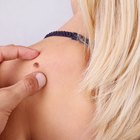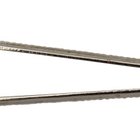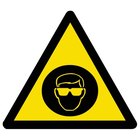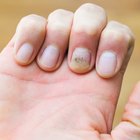
Karin Dreyer/Blend Images/Getty Images
The human papilloma virus causes warts to develop on different parts of the body. Broken skin is easily infected by the virus, therefore you should exercise caution when you have cuts and avoid contact with infected individuals. Warts under the nails are called subungual warts. They can be under the toenails or fingernails, and the location makes treatment more challenging than in the case of more easily accessible warts.
Subungual Wart Facts
Difficult-to-treat subungual warts can damage your nail bed and permanently distort your nail if left untreated. The wart can move your nail out of place, even causing it to detach from the nail bed completely if it gets big enough. While most warts are painless, subungual warts, because of their location and the pressure exerted on them, can cause a lot of pain. These are warts that cannot be ignored and must be treated.
Treatments
Different treatment methods have been suggested for removing subungual warts. The Acne-Psoriasis-Treatment.com website lists podophyllin, carbon dioxide laser treatment and electrocoagulation as effective treatment methods. The podophyllin wart paint consists of one part each of podophyllin, salicylic acid and acetone, and two parts collodion flexibleffincture benzoin. This chemical mix is painted on twice daily. X-ray, liquid nitrogen and ultrasonic therapy are also noted as producing good results.
Scientific Evidence
A 1992 study published in the "Australian Journal of Dermatology" looked at the effectiveness of carbon dioxide laser vaporization of subungual warts. Forty subjects were treated, some with warts that had resisted previous treatment with liquid nitrogen, or cryotherapy. A 10-month follow-up showed an overall subungual wart cure rate of 64.7 percent. Persistent warts that failed to respond to initial treatment had a 73.3 percent cure rate when subjected to further carbon dioxide vaporization. The researchers concluded that carbon dioxide vaporization is a viable treatment for subungual warts.
Consideration
The writers of the Health Care Advisor website caution that, if left untreated, subungual warts will increase in size and invade the skin. This will lead to infection in the finger or toe where the wart occurred. They further advise that parents pay special attention to children with these warts, since picking can lead to bleeding and inflammation. The website also attests that, although carbon dioxide vaporization is an effective cure for subungual warts, you may have a recurrence within three months. There is no absolute cure for either the virus or the warts they cause, so avoiding contraction of the virus is your best defense.
Related Articles

Fraxel Laser Treatment Dangers

Safety Hazards of Acetone

Harmful Effects of Wearing Magnetic ...

How to Remove an Eyebrow Tattoo

Chemicals That Stop Testosterone ...

A Wart on the Shoulder

Mesotherapy & Weight Loss Results

Carboxytherapy Side Effects

How to Shave Skin Moles

What Are the Dangers of Fraxel Repair?

How to Remove Hair Follicles to Prevent ...

How to Remove Acrylics With Acetone and ...

Photofacial Vs. Microdermabrasion

How do I Speed Up the Reversal of Face ...

How to Get Rid of Pink Scars

Negative Effects of Endermologie

How to Sterilize Safety Goggles

How to Treat an Ingrown Eyebrow Hair

How Do I Get Yellow Stains Out of My ...

Long-Term Health Risks of Laser Hair ...
References
Writer Bio
Dorian Facey began writing in 2008. She worked as a ghostwriter on the piece "I Believe in My Dream." Her previous work in a scientific research laboratory left Facey preferring topics involving the cause, prevention and treatment of diseases. She has a certificate in journalism and short story writing from ICS Canada, and a Bachelor of Science from McMaster University.
Photo Credits
Karin Dreyer/Blend Images/Getty Images